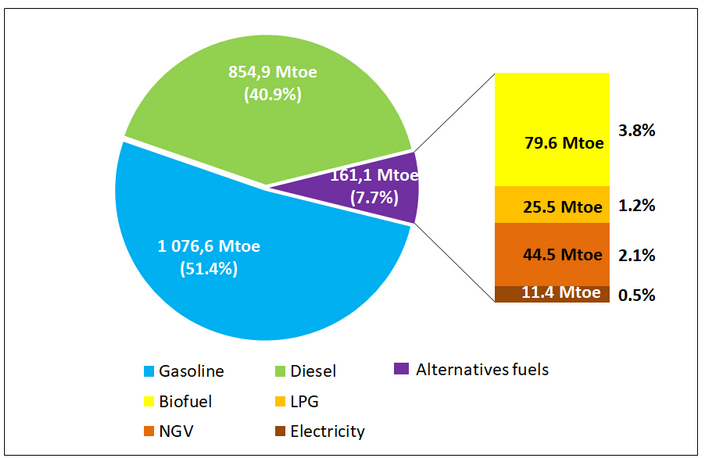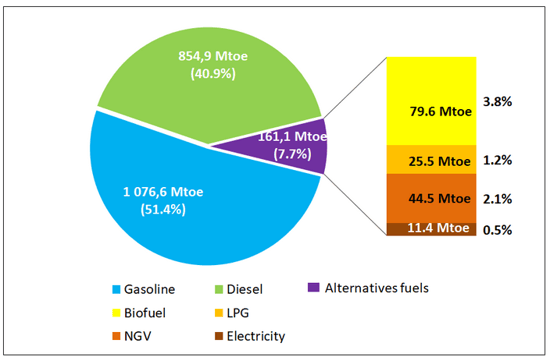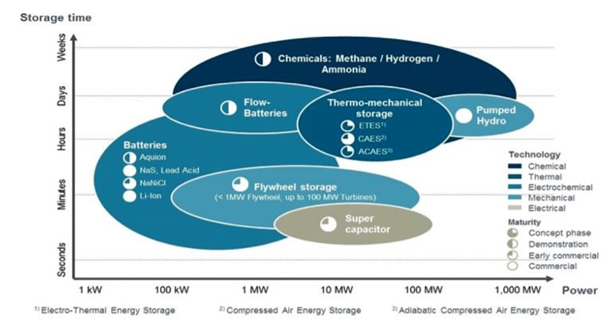
The UN Climate Change Conference (COP26) recently wrapped up in Glasgow and, as expected, ambitious climate goals were agreed upon by a broad spectrum of participants from both the public and private sectors. Perhaps the most poignant takeaway from the conference is this: The private sector is “all in” when it comes to driving climate-cooperative investments via environmental, social and governance (ESG) initiatives. Longtime financier Mark Carney noted that $130 trillion in assets are now pursuing net-zero emissions by 2050.
We’ve seen this type of excitement before—most recently with the Paris Agreement in 2015 (COP21)—only to see very little in the way of meaningful action. Will this time be different?
The biofuels segment is a good barometer for the challenges associated with combining good intentions and innovation with viability and scalability. Notwithstanding the pitfalls of the RFS and its implementation in the real world, first-generation biofuels have largely reached maturity and the innovative second-generation fuels have been “hit or miss.”
Why have so many of these projects failed to really take off? Is it confusing policy? Is it a lack of skilled leadership? Are there political agendas around agricultural and forestry policies both in North American and the European Union?
Feedstock Sensitivity
At the most basic level, feedstock sensitivity has been more challenging than once imagined, and it is an issue that will likely become increasingly divisive in a world evermore focused on all things “sustainable.” Diverting foods to fuels (think corn ethanol) has been controversial for many reasons since the 1990s, but that hasn’t changed reality for the two largest feedstocks utilized over the last decade: Maize based starch converted to sugar in the North American markets and the longer, remarkable rise of sugar cane ethanol in Brazil.
Both of these fuel sources have reached their maximum potential from both a practical and political point of view. However, European nations have carefully watched North America and Brazil and decided the first generation of fuels would be limited; they instead focused on accelerating the development of Gen2 fuels. For example, Clariant recently announced the successful construction of its new cellulosic ethanol plant in Romania. Europe’s policies have differed greatly from those in North American and Brazil and, as is often the case, “the second mouse gets the cheese.”
How is the Food/Fuel Debate Changing?
With innovations taking shape on both sides of the Atlantic, we are yet again at what will be a tipping point for the biofuels sector as the food-to-fuel debates continue. Now, the focus is not on big molecules like fats, oils, greases, or even basic alcohols like ethanol, propanol, or butanols. Today, there is renewed interest in a resource even more basic than these: hydrogen (H2), or its two most basic compounds like methanol (CH3OH) and half-sister, ammonia (NH3), are structured to deliver energy in clean forms, easily transported in pipelines and, most importantly, can be made from both fossil energy sources and bio platforms. Ideally, manufacturers would rely on a mix of the two, as there are limits to biofuels.
The image below illustrates 2017 market penetration data. Biofuels only comprise about 4% worldwide. though this figure does not include the near 10% of the world’s fuels consumed in the water (marine fuels) or fuels consumed in the air (aviation fuels). These are road transport fuels used on land by cars, trucks, trains, with LPG, the very light duty motorcycles, and others vehicle types.
 Source: IFPEN, from Enerdata and FO Licht
Source: IFPEN, from Enerdata and FO Licht
Hydrogen could play a pivotal role in a zero-carbon future because it can power everything from turbines and furnaces to fuel cells in vehicles without producing many harmful emissions. Hydrogen as a fuel source is advantaged because when it is combusted, it produces only water or steam as a byproduct. (If burned in air, the H2 will combust with the nitrogen to make oxides of nitrogen - a pollutant or precursor to air pollution). When used as a transportation fuel, for example, this contrasts sharply with gasoline or diesel fuel which release noxious compounds into the atmosphere.
However, hydrogen has many industrial uses, and it could be beneficial as a carbon-neutral source of energy. Currently, the only way to generate carbon-neutral or “green” hydrogen is via electrolysis of water, using sustainable electricity generated from solar or wind power. The cost of such power has come down, but electrolytic hydrogen has been too expensive at scale to compete with gasoline and natural gas, although prices for both are on the rise.
The practical application of hydrogen and its derivative compounds is noteworthy, especially given the 1Q2021 power outage in Texas that is still causing massive supply chain interruptions. Had the ERCOT leaders put more emphasis upon the storage of power and less on the obsolete “Just in Time” management technique for its power infrastructure, the disaster of 2021 could have been averted.

Source: https://www.cleantech.com/green-ammonia-potential-as-an-energy-carrier-and-beyond/
The image above clearly shows the best long-storage platform is chemicals. So, how do we then make these building blocks more cost competitive? The obvious solution is to take excess electrical energy from wind and solar and use electrolysis to make H2 and O2. However, the hydrogen needs to partner with carbon for chemical molecules and the oxygen needs a home in the chemical processes.
An additional approach is to use woody biomass as a feedstock. Wood contains structures that break down at elevated temperatures, so volatile elements must be removed via pre-heating in a furnace. The end product is charcoal, which (from some woods) has a very high carbon content. This refined charcoal can then be used as a renewable feedstock to make hydrogen. The hydrogen produced via combusting woody biomass is “blue,” and if it is then used in a chemical process that actually consumes carbon dioxide—to make methanol, for example—the manufacturer can claim carbon credits.
Is Wood a Sustainable Resource?
First and foremost, using wood as a feedstock avoids any sensitivities associated with food-to-fuel conversion. In many regions of the world, the use of wood as a source of energy is also regarded as carbon neutral so long as new trees are planted to continue the cycle of “plant, grow, harvest, repeat.” In regions with vibrant forest products industries, this is a standard silvicultural practice for managed timberlands.
There are five principles that define sustainable wood biomass, how it supports forest growth in the US Southeast, and how it can contribute to green and blue hydrogen production:
- Sustainable biomass is sourced from forests where forest inventory and carbon stocks are stable or increasing. Steady increases in forest inventory mean emissions from biomass are quickly sequestered by the continually growing forest landscape from which it is sourced.
- In the US, sustainable biomass represents a tiny fraction of the forest products industry. Each year, only 4% of the forest is harvested in this region leaving the remaining 96% to keep growing. Of that 4% that is harvested, roughly 3% is used for biomass.
- Forest tracts in the US Southeast are not harvested for biomass. Wood from a single tract of land typically supplies multiple markets, including sawmills, solid wood products, pulp and paper, among others.
- Sustainable biomass is produced from low-value wood that is created as a byproduct of a traditional timber harvest. Forest tracts are typically managed for high-value sawtimber, which generate the most revenue for landowners. Some trees (namely “pulpwood”) that do not meet the specifications for sawtimber are cascaded for use as biomass, which is in keeping with the principle of using wood fiber for its greatest climate benefit.
- Biomass is a small market but helps forest owners keep planting trees. Private citizens own 86% of the forestland in the US Southeast. Strong demand for forest products, like biomass, incentivize landowners to continue the cycle of planting and harvesting, versus converting their forestland to other, more lucrative uses. This demand helps landowners preserve and manage their forest to promote wildlife and biodiversity in the region.
Forest ecosystems also make up the largest terrestrial carbon sink on Earth. In the US alone, there are approximately 1.4 trillion live trees across all age/size classes on more than 635 million acres of forestland in the continental US that store an estimated 71,808 million metric tons (MMT) of carbon dioxide (CO2). Across the US, forests, urban trees, and harvested wood products remove 14% of all CO2 emissions and store the equivalent of 33 years of all CO2 emissions produced across the country.
Innovations and the production of biofuels are going to continue to increase because climate change pressures are driving it. Enabling a complementary range of existing renewable resources that includes sustainable biomass will help us reach climate goals faster… regardless of what happens at COP26.


 Larry Sullivan
Larry Sullivan



